Category: Robotics
-
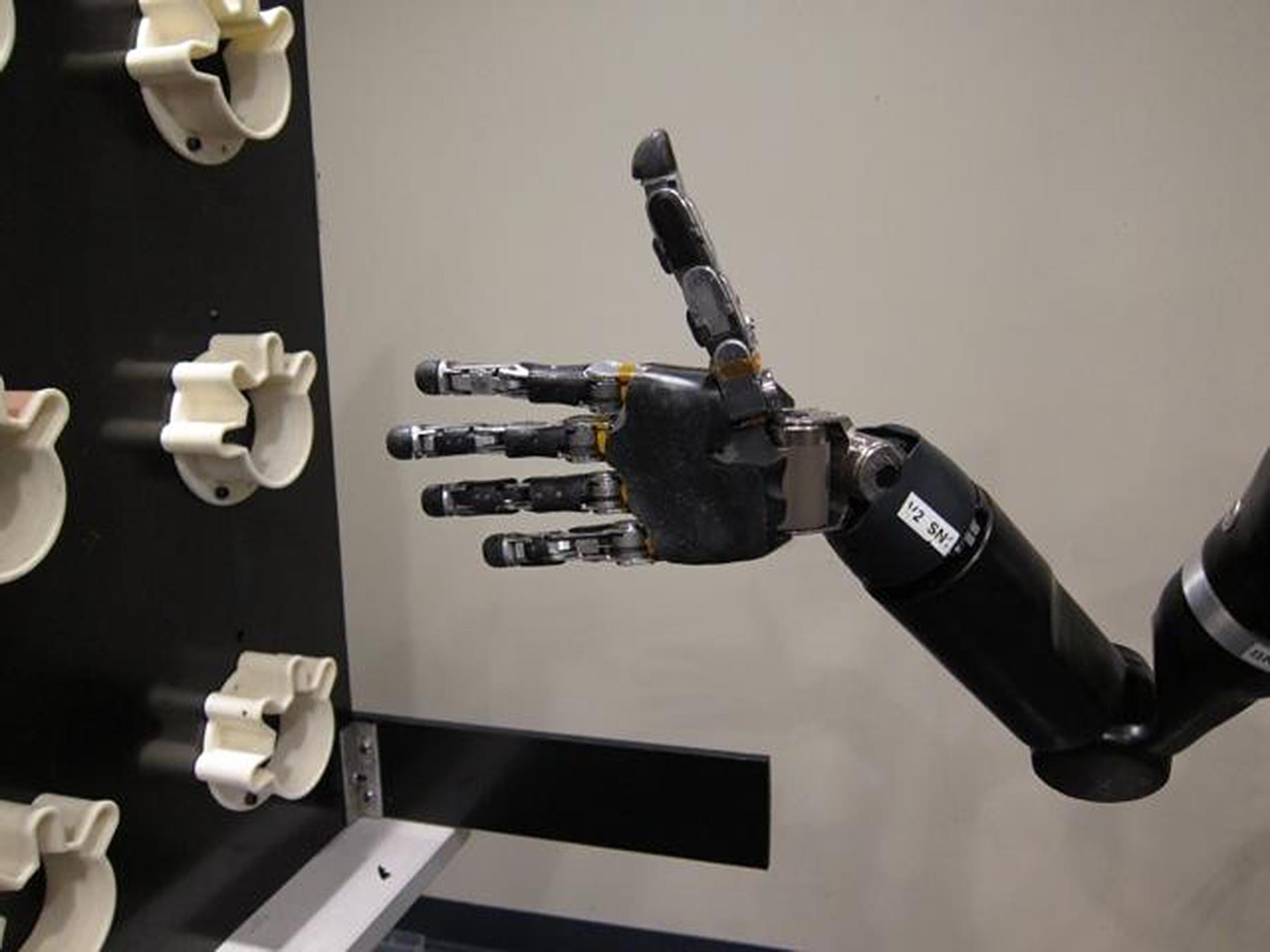
BCI enabled 10-D prosthetic arm control
Jennifer Collinger and University of Pittsburgh colleagues have enabled a prosthetic arm wearer to reach, grasp, and place a variety of objects with 10-D control for the first time. The trial participant had electrode grids with 96 contact points surgically implanted in her brain in 2012. This allowed 3-D control of her arm. Each electrode point picked up signals…
-
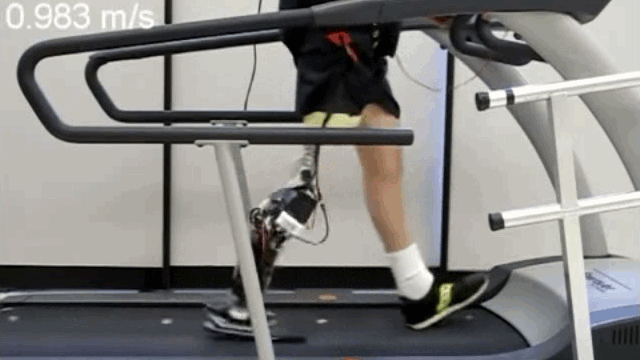
Applied robot control theory for more natural prosthetic leg movement
Prosthetics are lighter and more flexible than in the past, but fail to mimic human muscle power. Powered prosthesis motors generate force, but cannot respond with stability to disturbances or changing terrain. Robert Gregg and colleagues at the University of Texas have applied robot control theory to allow powered prosthetics to dynamically respond to a wearer’s environment.…
-

NIH “Bionic Man” with 14 sensor and brain controlled functions
The National Institute of Biomedical Imaging and Bioengineering recently launched the “NIBIB Bionic Man,” an interactive Web tool detailing 14 sensor based technologies they are supporting. They include: 1. A robotic leg prosthesis that senses a person’s next move and provides powered assistance to achieve a more natural gate. 2. A light sensitive biogel and…
-

MIT’s running, jumping cheetah robot, now wireless
MIT‘s Biomimetic Robotics Lab has unveiled a robotic cheetah that jumps hurdles and sprints at 10 mph, mimicking the natural bounding motions of a cheetah. The robot can leap across uneven terrain while still maintaining a steady speed, and cleared a 33 centimeter foam hurdle. The research team believes that the robotic cheetah could eventually reach speeds of…
-

Robotic fingers enhance grip
MIT researchers, led by Professor H. Harry Asada, have developed a robot that enhances the grasping motion of the human hand. Worn around one’s wrist, the device works like two extra fingers adjacent to the pinky and thumb. It consists of actuators linked together to exert forces as strong as those of human fingers during…
-

Context sensitive robot understands casual language
Cornell professor Ashutosh Saxenam is developing a context sensitive robot that is able to understand natural language commands, from different speakers, in colloquial English. The goal is to help robots account for missing information when receiving instructions and adapt to their environment. Tell Me Dave is equipped with a 3D camera for viewing its surroundings. Machine learning has enabled…
-

“Brain controlled” exoskeleton boosts limb power
“Hybrid Assistive Limb” or “HAL” is an exoskeleton by Cyberdyne that detects electrical pulses on the skin when one’s brain sends a “move” message to a limb. The robotic suit recognizes the intended motion, and then moves “naturally” with the arm or leg, providing additional power.
-

“Neurotic Robots” mimic human brain function
UC Irvine professor Jeff Krichmar and colleagues are experimenting with robotic awareness and trying to teach mechanical brains to behave more like human and animal brains by programming traits that mimic obsessive-compulsive disorder or a fear of open spaces. Professor Krichmar presented his research this week at the IEEE International Conference on Robotics and Automation in Hong Kong.…
-
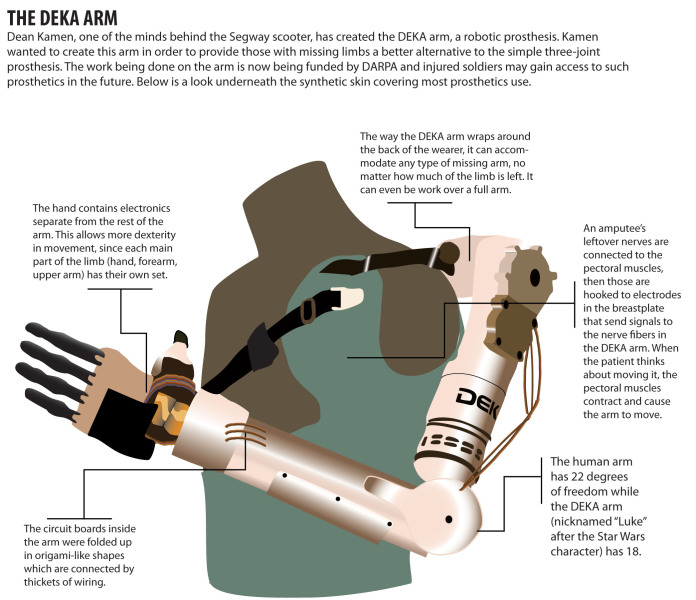
Prosthetic arm moves after muscle contraction detected
DEKA is a robotic, prosthetic arm that will allow amputees to perform complex movements and tasks. It has just received FDA approval. Electrodes attached to the arm detect muscle contractions close to the prosthesis, and a computer translates them into movement. Six “grip patterns” allow wearers to drink a cup of water, hold a cordless…
-

Robot and sensor system for seniors
GiraffPlus is an integrated sensor and robot system aimed at keeping seniors healthy and independent in their own homes. It is being developed by a consortium of European universities. The robot uses a Skype-like interface to allow caregivers to virtually visit seniors. Sensors on the ceiling, doors, and under the mattress help the system understand where the person…
-
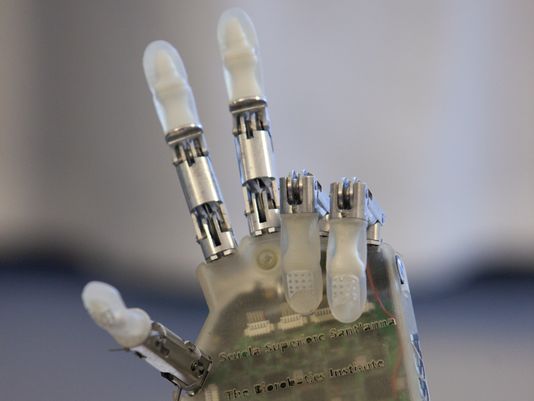
Trial: Improved sense of touch and control in prosthetic hand
http://stm.sciencemag.org/content/6/222/222ra19 In the ongoing effort to improve the dexterity of prosthetics, a recent trial showed an improved sense of touch and control over a prosthetic hand. EPFL professor Silvestro Micera and colleagues surgically attached electrodes from a robotic hand to a volunteer’s median and ulnar nerves. Those nerves carry sensations that correspond with the volunteer’s index finger and…
-
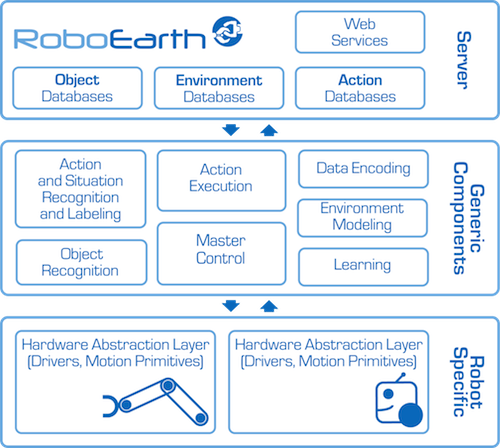
Collaborative cloud system for human-serving robots
http://www.roboearth.org/what-is-roboearth RoboEarth’s goal is to speed the development of human-serving robots. Scientists from five European universities gathered this week for its launch and demonstrated potential applications. This included a robot scanning a room’s physical layout, including the location of the patient’s bed, and the placing a carton of milk on a nearby table. The system is…